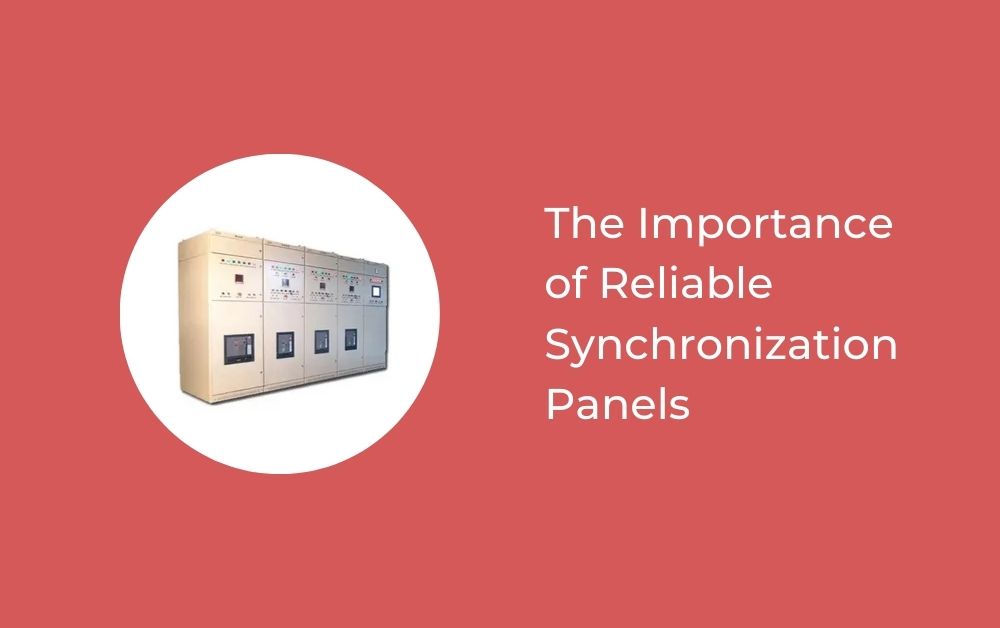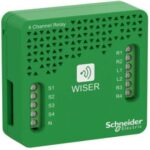Synchronization panels are crucial in today’s industrial and commercial sectors. These panels ensure the seamless operation of multiple power sources, improving efficiency and reducing downtime. Understanding their importance and how they work can help businesses maintain a stable and reliable power supply. This blog will delve into the significance of reliable synchronization panels, their functions, benefits, and how they can be maintained for optimal performance.
What are Synchronization Panels?
Definition and Purpose
Synchronization panels are electrical devices that coordinate multiple power sources, such as generators, to work together. They ensure that all connected power sources share the load evenly, preventing overload and ensuring a consistent power supply.
How Do They Work?
Synchronization panels compare the voltage, frequency, and phase angle of different power sources. When these parameters match, the panel connects the sources to the load, ensuring they operate in unison. This process is called synchronization.
Why Are Synchronization Panels Important?
Ensuring Continuous Power Supply
One of the primary reasons for using synchronization panels is to ensure a continuous power supply. In industries where power interruptions can lead to significant losses, these panels play a vital role in maintaining an uninterrupted power flow.
Load Sharing
Synchronization panels allow multiple power sources to share the load. This means that no single source is overburdened, leading to a more balanced and efficient power distribution.
Preventing Overload
By ensuring that all power sources operate in harmony, synchronization panels prevent overload situations. This helps in protecting equipment from damage and reducing the risk of power failures.
Benefits of Reliable Synchronization Panels
Increased Efficiency
Reliable synchronization panels improve the efficiency of power systems. By coordinating multiple sources, they ensure that each source operates at its optimal capacity, reducing waste and increasing overall efficiency.
Reduced Downtime
In case of a power failure, synchronization panels can quickly switch to an alternative source, minimizing downtime. This is especially important in critical operations where even a short interruption can cause significant disruptions.
Enhanced Safety
Synchronization panels enhance the safety of electrical systems. By preventing overloads and ensuring balanced load sharing, they reduce the risk of electrical fires and other hazards.
Cost Savings
Efficient power management leads to cost savings. Synchronization panels help in reducing energy waste, lowering maintenance costs, and preventing equipment damage, all of which contribute to overall cost savings.
Types of Synchronization Panels
Manual Synchronization Panels
Manual synchronization panels require human intervention to match the parameters of different power sources. While they are less expensive, they are also less efficient and require skilled operators.
Automatic Synchronization Panels
Automatic synchronization panels use advanced technology to automatically match the parameters of power sources. They are more efficient and reliable, making them suitable for critical applications.
Key Components of Synchronization Panels
Circuit Breakers
Circuit breakers protect the electrical system by interrupting the flow of electricity in case of an overload or short circuit. They are essential for the safety and reliability of synchronization panels.
Relays
Relays are switching devices that control the flow of electricity. They play a crucial role in the operation of synchronization panels by enabling or disabling connections between power sources.
Voltage Regulators
Voltage regulators maintain a constant voltage level, ensuring that all connected power sources operate within safe limits. This is crucial for the stability and reliability of the power system.
Frequency Meters
Frequency meters measure the frequency of the electrical current. Synchronization panels use this information to match the frequencies of different power sources.
How to Maintain Synchronization Panels
Regular Inspections
Regular inspections are essential to ensure the proper functioning of synchronization panels. Check for any signs of wear and tear, loose connections, or other issues that could affect performance.
Testing and Calibration
Periodic testing and calibration of synchronization panels help in maintaining their accuracy and reliability. This involves checking the performance of key components like circuit breakers, relays, and voltage regulators.
Cleaning
Keep the synchronization panels clean and free from dust and debris. This helps in preventing overheating and ensures smooth operation.
Professional Maintenance
Consider hiring professional maintenance services for synchronization panels. Skilled technicians can identify and fix potential issues before they lead to major problems.
Common Problems with Synchronization Panels and How to Fix Them
Overloading
Overloading occurs when the total load exceeds the capacity of the power sources. To fix this, ensure that the load is evenly distributed among all sources and that no single source is overburdened.
Frequency Mismatch
A frequency mismatch can cause synchronization issues. Regularly check and calibrate the frequency meters to ensure accurate measurements.
Voltage Fluctuations
Voltage fluctuations can lead to unstable power supply. Use voltage regulators to maintain a constant voltage level and prevent fluctuations.
Choosing the Right Synchronization Panel
Assess Your Needs
Before choosing a synchronization panel, assess your power requirements. Consider factors like the number of power sources, load capacity, and the criticality of your operations.
Compare Features
Compare the features of different synchronization panels. Look for panels that offer advanced features like automatic synchronization, remote monitoring, and advanced protection mechanisms.
Consider Quality and Reliability
Choose synchronization panels from reputable manufacturers known for their quality and reliability. Investing in a high-quality panel can save you from costly repairs and downtime in the long run.
Conclusion
Reliable synchronization panels are essential for maintaining a stable and efficient power supply in various industries. They ensure continuous power, prevent overload, and enhance safety. By understanding their importance and how to maintain them, businesses can improve efficiency, reduce downtime, and save costs. Whether you choose manual or automatic panels, regular maintenance and proper usage are key to ensuring their reliability and longevity. Investing in quality synchronization panels is a smart decision that can significantly benefit your operations.
For more insightful articles related to this topic, feel free to visit guestpostinc.com



